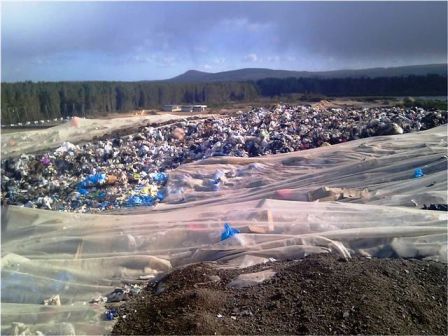Background of Waste Management
General Information
The legal definition of waste in the UK is derived from the EU Waste Framework Directive. In basic terms a waste is anything which you decide to, or are required to, throw away. Even if the substance or article is given to someone else to be reused or recycled, it is still legally considered to be waste if it is no longer required by the person who produced it.
All Local Authorities across Scotland have been tasked with meeting strict targets to reduce the volume of waste requiring disposal, these targets are:
- To achieve a recycling/composting rate of 70 per cent by 2025
- No more than 5 per cent should be landfilled by 2025
In an effort to fulfil these requirements in 2004 The Moray Council implemented the Kerbside Recycling Scheme and began a programme to increase the number of Recycling Points across the area. By 2013 the kerbside recycling scheme had been rolled out to all households in Moray and had been changed to include an increased number of material streams being collected. It is testament to all those who regularly recycle that Moray is now one of the highest performing authorities in Scotland
Landfill
All household and commercial waste collected by Moray Council is currently sent to our landfill site at Nether Dallachy near Spey Bay. It was first used as a landfill site in 1993 and it is the only Council operated site currently in use in Moray.There is now less than 2 years left at Dallachy landfill site in Moray before it closes. The waste will be disposed of at an Energy from waste plant after the site closes.
In order to protect the environment and local water sources close to the site, the landfill site is constructed and filled in phases. Within each phase, cells are constructed with a protective liner and associated drainage is laid prior to the waste being deposited. This liner allows the waste to be contained and the leachate (the harmful liquid created in a landfill site) to be retained within the landfill until it is removed for treatment.
These two pictures show some of the work involved with making a phased cell for all the waste. The pictures were taken during the construction of Phase 4 in 2004. The construction of each phase costs Moray Council £1.5 million.
Once the cell is completely constructed, waste can start to be deposited here.

The refuse is taken to Dallachy either directly by the refuse collection vehicles or is transported in bulk from our waste transfer station at Moycroft, Elgin. In 2021/2022 over 20,000 Tonnes of waste was sent to Dallachy Landfill site, with each tonne costing Moray Council £96.70 in Landfill Tax alone just to send here.
Each load of waste is condensed by a compactor digger, and packed together over time to make a small hill.
At the end of each day the waste must be covered with a permeable membrane and a layer of soil. This stops rubbish from blowing off the site as well as keeping vermin and birds away from the waste.
This picture shows the permanent cover being put on Phase 4 once it was completed in 2008. A further £1 million is required to cover and cap the cell once it is complete.
Landfill Directive
The European Union Landfill Directive of 1999 sets out targets to reduce reliance on landfill, summarised as follows:
- Reducing the amount of Biodegradable Municipal Waste going to landfill by 25% of 1995 levels by 2010, 50% by 2017, 65% by 2020
- Banning the landfilling of items such as liquids, explosives, Special Wastes and tyres
- Improving the design, construction and management of new and existing landfill sites
Zero Waste Scotland
In 2010 the Scottish Government launched Scotland’s first Zero Waste Plan. Scotland's Zero Waste Plan sets out the Scottish Government's vision for a zero waste society. This vision describes a Scotland where all waste is seen as a resource; Waste is minimised; valuable resources are not disposed of in landfills, and most waste is sorted, leaving only limited amounts to be treated.
The plan was then implemented as the Waste (Scotland) Regulations 2012 when it was passed by the Scottish Parliament on 9 May 2012. The regulations make the following provisions.
- Businesses to present metal, plastic, glass, paper and card for separate collection from 1 January 2014.
- Food businesses (except in rural areas) which produce over 50 kg of food waste per week to present that food waste for separate collection from 1 January 2014.
- Food businesses (except in rural areas) which produce over 5 kg of food waste per week to present that food waste for separate collection from 1 January 2016.
- A ban on any metal, plastic, glass, paper, card and food collected separately for recycling from going to incineration or landfill from 1 January 2014.
- A ban on biodegradable municipal waste going to landfill from 1 January 2021.
